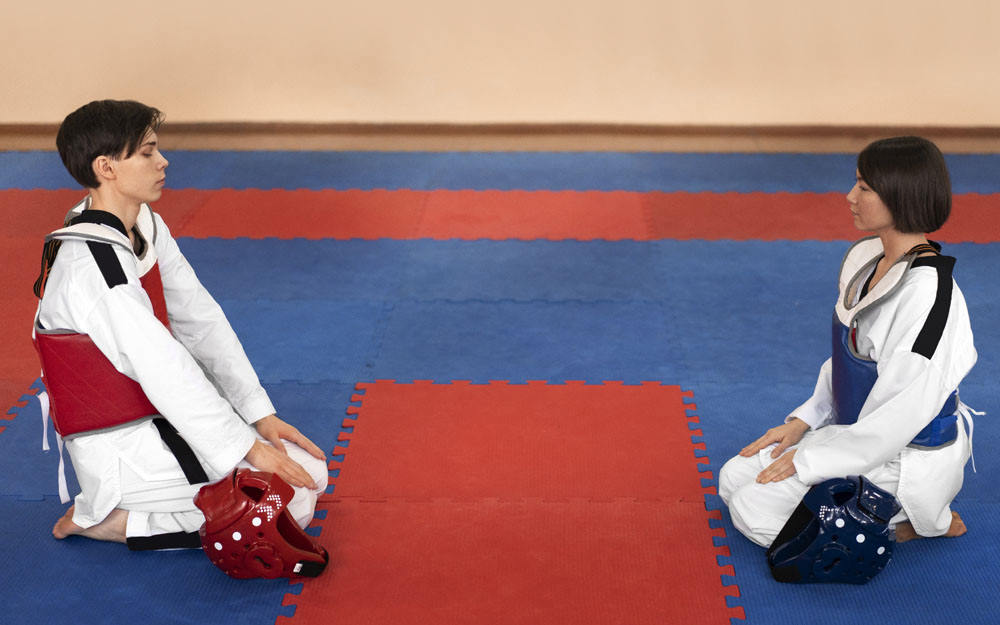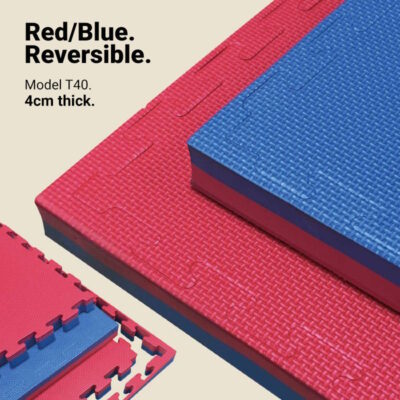As we have said many times, and we have insisted on it, the thickness of foam mats is the main characteristic of a tatami mat and the one that will determine the choice between one or another.
But, how should we choose the thickness of a tatami mat?
Today we are going to explain how the thickness influences the choice of puzzle tatami and we have also created a table for you where you can see which thicknesses are recommended for each use.
Are you looking for a Foam Mat?
Find here everything you need
How does the thickness influence the features of Tatami Mats?
The thickness of a tatami floor can influence several factors, and the choice of the most appropriate thickness will depend on our needs and preferences. In this sense, the thickness is related to certain features of tatami:
- Cushioning and comfort. Thicker tatami mats provide greater cushioning for martial arts training or physical activities such as yoga, Pilates, etc.
- Impact protection. For activities that involve sudden movements or jumping, such as martial arts training or high-intensity exercises, a thicker tatami mat offers better impact protection. This is especially important for reducing the risk of injury during intense workouts.
- Stability and firmness. A thicker, high-density tatami mat offers a more stable and firm surface, which is perfect for martial arts, helping athletes maintain balance and strengthen their movements.
Why is it important to choose the right thickness for your Tatami Mat?
Selecting the correct thickness for your puzzle mat will ensure optimal performance, maximum durability, and great safety during sports.
Choosing a thickness greater than the recommended one is not bad, the problem arises when we choose a thickness less than the recommended one for the activity we want to do on the tatami.
In this sense, if we choose a thickness less than the recommended one, we run several risks:
- Poor athletic performance. A thinner shoe can prevent athletes from experiencing the necessary comfort during sports, negatively impacting their performance.
- Increased risk of injury. With less thickness, the tatami’s cushioning is reduced. In sports that require high cushioning and shock absorption capacity because of a higher risk of falls, this poses a greater risk of injury to the athlete.
- Reduced durability. A tatami mat that is thinner than necessary will wear out more quickly and require premature replacement.
Tatami Mats Thickness/Usage Table
Considering the above, how to choose the thickness for a Tatami Mat?
When choosing the thickness for a tatami mat, it’s essential to consider the activity we’ll be doing. That’s why we’ve prepared this table of puzzle mats thicknesses and uses, where you can see which thickness is best for each activity or use.
| 10mm | 20mm | 25mm | 30mm | 40mm | |
|---|---|---|---|---|---|
| Judo | x | ||||
| MMA | x | ||||
| Hapkido | x | ||||
| Jiu-Jitsu | x | ||||
| Aikido | x | ||||
| Bazilian Jiu-Jitsu | x | ||||
| Krav Maga | x | ||||
| Kung-Fu | x | ||||
| Muay Thai | x | ||||
| Wrestling | x | x | |||
| Judo for kids | x | x | |||
| Karate | x | ||||
| Taekwondo | x | ||||
| Full Contact | x | ||||
| Boxing | x | x | |||
| Kickboxing | x | x | |||
| Dance | x | x | |||
| Fitkid | x | x | |||
| Gymnastic | x | x | |||
| Fitness | x | x | |||
| Yoga | x | x | |||
| Pilates | x | x | |||
| Relaxing exercises | x | x | |||
| Children´s spaces | x | ||||
| Gym floor protection | x | ||||
| Home floor protection | x | ||||
| Garage floor protection | x |
Are you looking for a Foam Mat?
Find here everything you need


